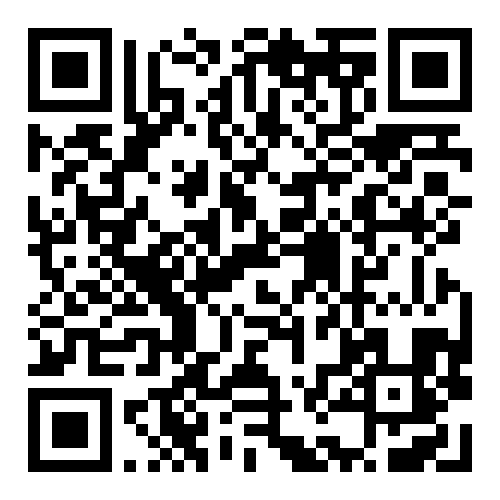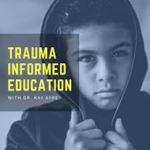5 Trauma-informed physical education with Dr Douglas Ellison
Research into childhood trauma consistently highlights the role of repetitive and rhythmic movements in helping to regulate arousal and emotions. Physical education and sports can provide students with experiences of success, agency, and self-efficacy that may be absent in other areas of their educational journey. But how can physical education be adapted to support trauma-informed practices?
Dr. Douglas Ellison

 Dr Douglas Ellison is an assistant professor at Kent State University, where he teaches future educators in the field of physical education. Before moving into higher education in 2017, Dr Ellison spent a decade in Charlotte, North Carolina, as a nationally certified physical and health education teacher. His academic journey has taken him from Western Michigan University to Wingate University and ultimately the University of Illinois at Urbana-Champaign, where he earned his PhD in Pedagogical Kinesiology. Dr. Ellison’s teaching covers everything from secondary physical education methods to motor development across the lifespan. His research focuses on equity and trauma-informed practices that support both educators and students.
Dr Douglas Ellison is an assistant professor at Kent State University, where he teaches future educators in the field of physical education. Before moving into higher education in 2017, Dr Ellison spent a decade in Charlotte, North Carolina, as a nationally certified physical and health education teacher. His academic journey has taken him from Western Michigan University to Wingate University and ultimately the University of Illinois at Urbana-Champaign, where he earned his PhD in Pedagogical Kinesiology. Dr. Ellison’s teaching covers everything from secondary physical education methods to motor development across the lifespan. His research focuses on equity and trauma-informed practices that support both educators and students.
Learn more about Dr Ellison’s work by clicking or scanning the QR code.
Dr. Ellison: I completed my PhD at the University of Illinois, but during my current role at Kent State, I became deeply interested in trauma-informed practices. A colleague held workshops on trauma-informed strategies for faculty, and attending these sessions made me reflect on my ten years as a health and physical education teacher in a large urban school setting, where over 75% of my students faced challenges linked to poverty. While I always focused on building strong relationships with my students, I realised in these workshops that trauma-informed approaches could have amplified my effectiveness as an educator.
Had I known about skills like self-regulation back then, I can only imagine the positive impact it would have had on my students. While working on my doctoral degree, I attended the Teaching Personal and Social Responsibility (TPSR) Alliance conference, which brought together practitioners using physical activity to foster personal and social responsibility among youth. It wasn’t just about research—it was about educators’ hands-on work to make a difference in after-school programs.
My motivation has always been to help others improve their lives, whether through my role as a teacher, a researcher, or a parent. If I had to summarise my sense of purpose, it’s about empowering others to pursue what inspires them. Trauma-informed practices provide a pathway to achieve that, equipping students with skills that nurture their growth and resilience.
Dr. Krishnamoorthy: How do you see physical education in schools being relevant to childhood trauma?
Dr. Ellison: I believe it’s crucial for teachers to first understand their own experiences with trauma before attempting to engage in trauma-sensitive work in their classrooms or gymnasiums. In physical education, students are often on public display, exposing their bodies and abilities, which can be a traumatic experience for some. When you combine the potential negative experiences in the gym with students already dealing with toxic stress, it can create a perfect storm. We, as teachers, could unknowingly be triggering trauma responses, contributing to an unsafe environment. This can manifest as behaviours we might interpret as defiance, disinterest, or resistance to learning. However, these behaviours may be a result of the compounded stress from one or more traumatic experiences outside of school.
“When you combine the potential negative experiences in the gym with students already dealing with toxic stress, it can create a perfect storm.”
Physical education aligns well with trauma-informed practices by connecting the mind and body. It helps students self-regulate, express emotions appropriately, and become more self-assertive. This is why it’s essential for health and physical educators to understand childhood trauma. In physical education, we inherently engage both the mind and body, making it a perfect setting to help students navigate their emotional and physical challenges. Teachers must be intentional in their pedagogical choices to create opportunities for success without inadvertently causing harm.
Principles of Trauma-Aware Physical Education
This journal article by Thomas Quarmby and colleagues from Leeds Beckett University in the United Kingdom explains how trauma manifests and the impact it can have on children and young people’s engagement in physical education.
The authors suggest five evidence-informed principles when seeking to enact trauma-aware practice in physical education: (1) ensuring safety and wellbeing, (2) establishing routines and structures, (3) developing and sustaining positive relationships that foster a sense of belonging, (4) facilitating and responding to youth voice and, (5) promoting strengths and self-belief.
Read the journal articled or scan the QR code for access.
Engaging Reluctant Learners in Health and Physical Education
Dr. Krishnamoorthy: Physical education has the potential for movement and exercise, which can regulate our nervous system. One of the benefits of sport or exercise in schools is that it can begin with low-stakes relationships with educators. This doesn’t seem as imposing to students. What has been your experience engaging students – especially those otherwise closed off or reluctant to participate?
Dr. Ellison: I found great satisfaction in interacting positively with students who struggled academically. Many of these students came alive in the gym. For them, physical education allowed them to shine in ways they couldn’t in the classroom. Students dealing with personal pain could use their physical abilities to excel in the gymnasium. Unlike the academic setting, physical education doesn’t always expose their weaknesses or make them feel vulnerable.
 Frequently, I would see surprise on the faces of other teachers when they would pass by the gym and see these students thriving in the gym. They could demonstrate their strengths physically, which they often didn’t get to show in other subjects. When done right, physical education can be a place of growth and success rather than discomfort for students who might not feel confident in their physical abilities. Trauma-informed practices can further enhance the impact. When these practices are used intentionally by teachers, students can truly thrive.
Frequently, I would see surprise on the faces of other teachers when they would pass by the gym and see these students thriving in the gym. They could demonstrate their strengths physically, which they often didn’t get to show in other subjects. When done right, physical education can be a place of growth and success rather than discomfort for students who might not feel confident in their physical abilities. Trauma-informed practices can further enhance the impact. When these practices are used intentionally by teachers, students can truly thrive.
Incorporating the Teaching Personal and Social Responsibility (TPSR) Framework
Dr. Ellison: The Teaching Personal and Social Responsibility (TPSR) framework is a curriculum and instructional model focused on the often-overlooked affective learning domain for those unfamiliar. In physical education, we typically emphasise the psychomotor and cognitive domains, but the affective domain—addressing emotional and social development—is often underutilised. TPSR addresses this gap by empowering students to take responsibility for their wellbeing and be responsive to the wellbeing of others. It embeds life skills and values directly within physical education activities rather than teaching them as separate components.
TPSR’s structure is intentionally integrated, so rather than having a designated ‘life skills day,’ these values are woven through daily activities. The ultimate goal, represented by TPSR’s fifth level, is the transfer of these skills beyond the gym into students’ lives at home, school, and in the community. TPSR has five levels: Level 1 focuses on respecting others’ rights and feelings, Level 2 on self-motivation, Level 3 on self-direction, Level 4 on leadership, and Level 5, the ultimate goal, is the application of these skills in everyday life. As students progress, we gradually shift responsibility from teacher-led to student-led. Through TPSR, students gain a sense of empowerment.
Teaching Personal and Social Responsibility (TPSR)
 Don Hellison’s TPSR program guides children toward adopting higher values through progressive steps or levels. However, he was disheartened that educators sometimes treated these levels as fixed achievement goals rather than an evolving, integrated approach to life. When the TPSR system was effectively implemented, teachers noticed that classrooms operated more smoothly, requiring less direct management, as students took responsibility for regulating their behaviour.
Don Hellison’s TPSR program guides children toward adopting higher values through progressive steps or levels. However, he was disheartened that educators sometimes treated these levels as fixed achievement goals rather than an evolving, integrated approach to life. When the TPSR system was effectively implemented, teachers noticed that classrooms operated more smoothly, requiring less direct management, as students took responsibility for regulating their behaviour.
Check out this short video for an overview of TPSR from the University of Auckland. Click or scan the QR code to watch the video.
Facilitating a Safe and Supportive Learning Environment
“RREs: Rules, Routines, and Expectations. These helps create consistency, so students know what to expect when they walk in.”

Re-Enactment for Prevention
“When a student says, ‘I don’t want to participate’ or reacts strongly to a situation, it’s not a reflection on the teacher; it’s often an unaddressed need from another part of their life.”
Limbic Defibrillators
 Some teachers also incorporate mindfulness practices, such as yoga or breathing exercises, which connect the mind and body. Music is another powerful tool. I often use soothing music when students enter the gym and again as they leave. It helps them transition into a calmer state, which can be crucial for students who are stressed or agitated. I even let students create playlists. Giving them this agency adds another layer of ownership and helps them regulate in a familiar and supportive way.
Some teachers also incorporate mindfulness practices, such as yoga or breathing exercises, which connect the mind and body. Music is another powerful tool. I often use soothing music when students enter the gym and again as they leave. It helps them transition into a calmer state, which can be crucial for students who are stressed or agitated. I even let students create playlists. Giving them this agency adds another layer of ownership and helps them regulate in a familiar and supportive way.Throughout the lesson, I continued to weave these TPSR levels into feedback – reminding students of their goals, encouraging resilience, and linking physical challenges to personal growth. By embedding these principles into the lesson, students develop affective skills alongside physical and cognitive ones without taking away from the physical education objectives.
Limbic Defibrillators: Using Teaching Personal and Social Responsibility (TPSR) Model as a Trauma-informed Practice (TIP) Tool
This journal article by Douglas Ellison and colleagues explains how trauma manifests and its impact on children and young people’s engagement in physical education. The article presents an overview of trauma and the practical steps for implementing Trauma-Informed Practices (TIPs) within the daily program format of the Teaching Personal and Social Responsibility (TPSR) model. Examples are also discussed in the article.
Read the journal article or scan the QR code for access.
 Dr. Ellison: Health and physical education teachers are often skilled at setting psychomotor and cognitive objectives, but affective goals tend to be surface-level. With TPSR, we bring these affective objectives to the forefront, making them explicit and purposeful in every lesson. Watching someone who’s been using TPSR for a long time is incredible. It allows students without strong physical abilities to focus on other forms of success, like leadership or teamwork.
Dr. Ellison: Health and physical education teachers are often skilled at setting psychomotor and cognitive objectives, but affective goals tend to be surface-level. With TPSR, we bring these affective objectives to the forefront, making them explicit and purposeful in every lesson. Watching someone who’s been using TPSR for a long time is incredible. It allows students without strong physical abilities to focus on other forms of success, like leadership or teamwork.“Kids haven’t fundamentally changed—they’re developmentally similar to how they’ve always been. It’s us, the adults, who need to evolve.”
Teacher/Student Relationships
Dr. Krishnamoorthy: For many students, some of their closest relationships in school are with their coaches or PE teachers – who often see them at their best. How do you facilitate safe, meaningful connections with students before, during, or after a PE lesson?
Dr. Ellison: For me, connecting with students happens naturally. I’m intentional about noticing their interests. If a student is on a university athletic team, I’ll ask about it. If they’re looking at something interesting on their phone, I’ll discuss it. These small, genuine interactions build rapport. I approach teaching with a playful tone, inviting my students to engage openly. Relationship-building is about using your strengths and being authentic. Students quickly sense sincerity. It could be as simple as asking about their favourite sports team or music tastes. Genuine curiosity goes a long way and must come from a place of sincerity and respect. We should want to know and enjoy our students’ company.
Chapter Summary
- Physical education can expose students’ vulnerabilities in a public setting, which may be trauma-inducing for some.
Trauma-informed practices complement physical education by connecting the mind and body, supporting self-regulation and emotional balance. - Physical education provides a valuable space for students who may struggle academically to excel and engage in activities where they feel competent.
- The Teaching Personal and Social Responsibility (TPSR) model is a curriculum framework focused on developing students’ affective skills and personal growth. TPSR integrates life skills and values into physical education, helping students build resilience and social responsibility.
- Understanding the context and knowing your students are essential for creating a safe, inclusive physical education environment.
![]() Listen to the full interview on the Trauma-Informed Education Podcast
Listen to the full interview on the Trauma-Informed Education Podcast
Listen to our full interview with Dr Douglas Ellison on our Trauma Informed Education Podcast.
Click or scan the QR code to start listening.
References
Ayre, K., & Krishnamoorthy, G. (Hosts). (2021, May 02). Trauma-Informed Physical Education with Dr. Douglas Ellison [Audio podcast episode]. In Trauma-Informed Education. SoundCloud. https://on.soundcloud.com/ndN98JjH6uiE5fHgfv
Ellison, D. W., Walton-Fisette, J. L., & Eckert, K. (2019). Utilizing the teaching personal and social responsibility (TPSR) model as a trauma-informed practice (TIP) tool in physical education. Journal of Physical Education, Recreation & Dance, 90(9), 32-37. https://doi.org/10.1080/07303084.2019.1657531





